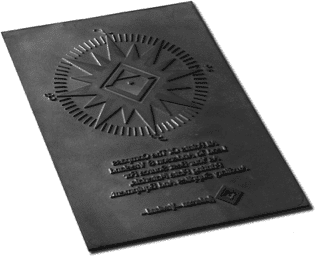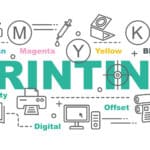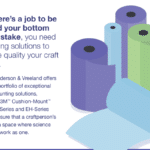Transitioning to Digital Printing … Flexo Has Come a Long Way Since Molding Presses
Flexographic printing has evolved significantly from the days of basic forms printing to today’s high-resolution digital output, which has altered the flexo landscape. The process of flexography was originally called aniline printing and dates back to 1890, and for the next half-century was widely used in food packaging.
In the 1940s, the Food and Drug Administration classified aniline dyes as unsuitable for food packaging and printing sales plummeted. A turning point came when the process was renamed “Flexography” in 1952, which occurred around the time new and safe inks were developed for its use, and flexo got the go-ahead from the FDA.
Flexography was found suitable for printing materials ranging from news stock to vinyl shower curtains. The number of converters multiplied rapidly and a new era began for this industry that was to grow by leaps and bounds.
 The first plates developed for flexo printing were made of natural rubber by companies like Goodyear. Rubber plates were pressed into a matrix at high pressure by vulcanizers or molding presses, like the system at the top right. A large part of Anderson & Vreeland’s business was once dedicated to producing matrix used to make rubber plates, and the company sold and serviced molding presses under the brand name “Precisionplate” presses. A&V is one of the only companies that stills produces matrix today.
The first plates developed for flexo printing were made of natural rubber by companies like Goodyear. Rubber plates were pressed into a matrix at high pressure by vulcanizers or molding presses, like the system at the top right. A large part of Anderson & Vreeland’s business was once dedicated to producing matrix used to make rubber plates, and the company sold and serviced molding presses under the brand name “Precisionplate” presses. A&V is one of the only companies that stills produces matrix today.
Originally flexo printing was basic in quality, however, everything changed in the early 1970s with the introduction of photopolymer plates. Photopolymer plates offered much greater stability and durability over rubber plates, and significantly improved registration. Applications for flexo significantly expanded with improved registration, which allowed for multi-color printing.
During this period photopolymer plates were processed with solvent, which presented health and environmental problems. For many years advancements in flexo focused on producing less hazardous organic solvents, and more user-friendly, efficient plate processors.
In the 1990s, digital solvent and water-wash plates were introduced offering improved quality and efficiency by eliminating film production and handling. Computer-to-plate devices were introduced to ablate these carbon-masked plates and are still utilized today, only with improved performance features like higher wattage lasers and advanced optics.
Over the past 15 years, technology has kicked into high gear offering a number of flexographic improvements. In fact, digital plate processing and digital printing have revolutionized flexo, making molding presses once used to form rubber plates look like dinosaurs. While conventional systems still abound, digital is taking market share for good reason.
Digital presses offer quicker response times due to minimal press setup. They simplify the printing process and are more cost-effective, especially on short to medium runs. This opens doors for flexo trade shops to produce new work that was previously unavailable to them.
When should you transition to digital? In a recent white paper written by Lee Zerfass, Digital Products Manager for A&V, Lee noted, Our customers believe they should have invested in CTP back when they first considered it rather than waiting. The same holds true with digital printing. Our customers are benefitting from simple to sophisticated integrated solutions offered for digital printing and feel they should have made the move earlier.




